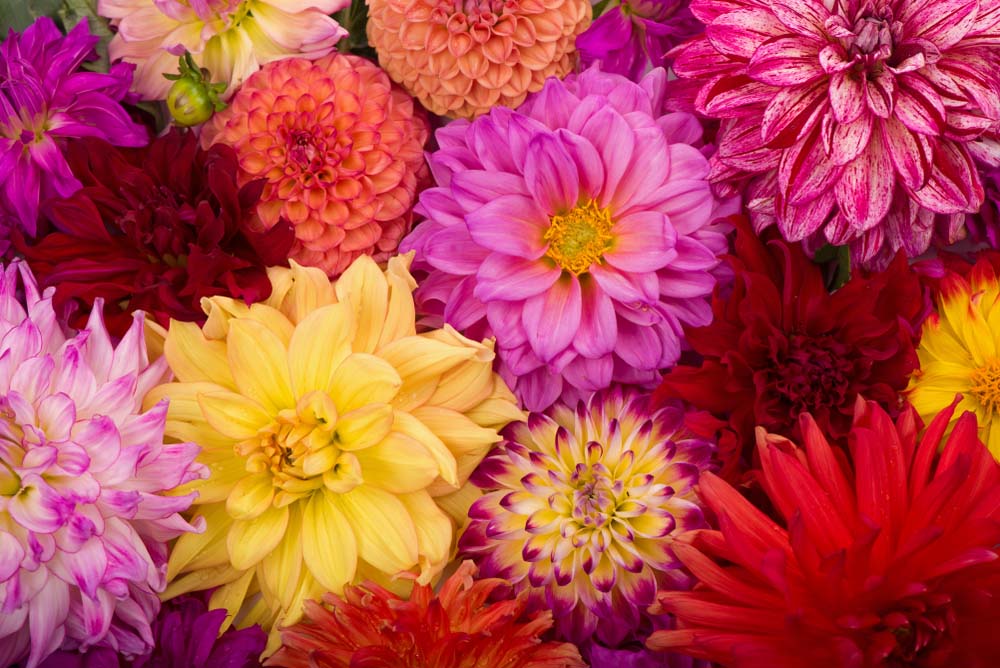Description
Dahlia –
There are about 30 species and some 20,000 cultivars of bushy, often tuberous-rooted, perennials, sometimes grown as annuals, in this genus. They occur from mountainous areas of Central America. They are grown for their flower heads which are available in a variety of forms, colors, and patterns. Leaves are pinnate, sometimes pinnatifid to pinnatisect, and divided into oval leaflets, with toothed edges and rounded tips, 8-20″ long, proportionate in size to the blooms, and are mid to dark green. Cactus and Laciniated blooms often have more delicate, finely cut leaves. Almost all currently grown cultivars have strong, straight stems and attractive foliage. Dahlias flower from mid summer to first frost, when many other plants are past their best. All are good for garden display and cutting, many, especially the giant flowered dahlias, are suitable for exhibition. Plant different types in a bed, or group them in threes or fives in a mixed herbaceous border.Those for exhibition or cut flowers are best grown in rows on their own. Bedding dahlias are low growing and may be raised from seed and treated as annuals. They bloom from early or mid summer or autumn, especially if deadheaded, use for massed plantings, edging a border, and in containers.
So many different flower forms have been developed that the hybrids are classified into about 10 different groups, determined by the size and type of their flower heads. Most groups have small, medium, and large subdivisions.
annual – Most prefer a sunny, sheltered position in well fertilized, well drained soil. Feed with a high nitrogen fertilizer weekly in early summer and then feed in mid summer to early autumn using a high potassium liquid fertilizer.Deadhead as flowers fade and to encourage bushiness, and to prolong flowering
zones 8-10




